The island of Gozo in the Maltese archipelago may be small, but it boasts a variety of activities for visitors to enjoy including exploring local villages, dining on succulent Mediterranean cuisine, soaking up the sun at the beach or sailing to nearby Comino for a fun-filled day at the Blue Lagoon. There is no shortage of places to see in Gozo, Malta, and each one is more fun than the last!
Tales of Gozo are nearly as ancient as the island itself; it was immortalized by Homer in the Greek epic poem, The Odyssey. The poem tells us of the hero, Odysseus, and his 10-year voyage back to Ithaca from Troy.
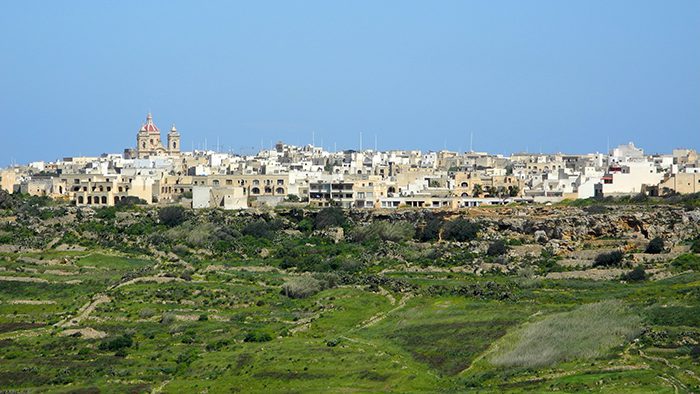
The prehistoric Ggantija temples are one of the island’s main attractions and a UNESCO World Heritage Site. But your Gozitan history lesson won’t end there. rolling around Victoria (Rabat) will reveal centuries-old houses along narrow, cobblestone streets as well as charming pijazzas (squares). The island also features luxury hotels, scenic seaside villages and two impressive churches, the Gozo Cathedral and the Basilica of St. George. But if what you are really after is some R&R, you’re headed to the right place. Gozitans know how to relax and enjoy simple pleasures, and did I mention that they love to eat!
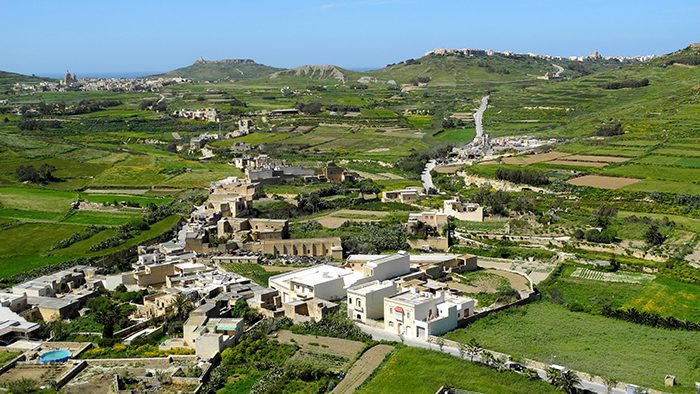
Getting around Malta with the newly established bus system is now easier than ever. Traveling by bus is definitely the most cost-effective method of public transportation. Mainland routes pass through the main bus terminal in Valletta while direct routes provide service through smaller towns and villages without a stop in Valletta. Bus services run from 5:30 am to 11:00 pm with night buses in select areas. Click here to learn more about tickets, pricing and bus schedules.

Private car hires and taxis can also be contracted to transport you to almost anywhere on the island. Book a shuttle airport transfer to your hotel here. Taxis in Malta are white, but not all are fitted with meters so be sure to agree on a rate before you take off. Renting a car yourself allows you the most freedom and costs approximately €16 to €28 per day. In true English style, driving is on the left side of the road. All road signs are in Maltese and English. The Malta Pass is also a convenient option for sightseeing around the Maltese islands. It provides visitors with access to over 50 attractions as well as open-air sightseeing buses on Gozo and special discounts at stores and restaurants. You can purchase a 1, 2, or 3-day pass.
Book your Full-Day Gozo Island Excursion from Malta here.
Without further ado, these are the 10 places to see in Gozo, Malta!
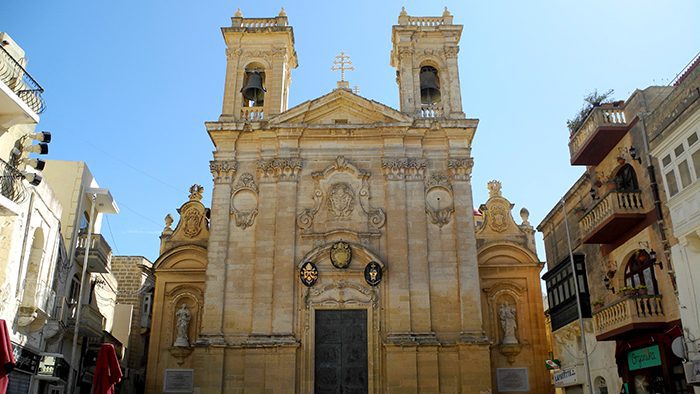
Victoria is both the geographical and commercial heart of Gozo. Approximately 6,000 people reside in and around this historical city. Like its sister island of Malta, Gozo has been largely influenced and developed by the previous incumbents, the Knights of St. John, a religious chivalrous order that governed the Maltese islands from 1530 to 1798.
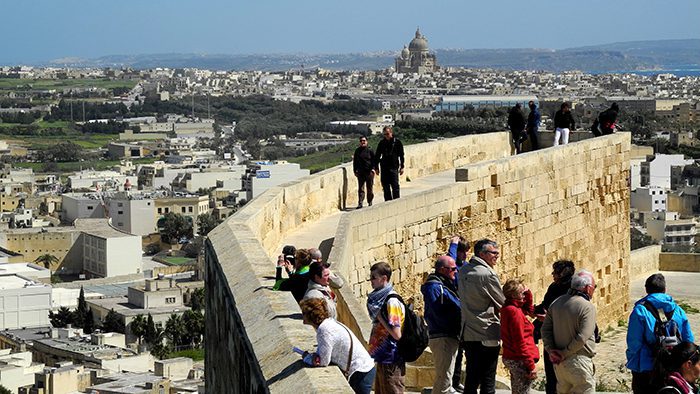
Only since 1887 has Victoria had its new name. It was previously known as Rabat. The city was renamed in honor of Queen Victoria’s Golden Jubilee, but locals still refer to it as Rabat. The legacy of Victoria, however, stretches back long before the Knights of St. John ruled over the Maltese islands. It was a Phoenician settlement around the year 1800 BC, predating the establishment of the Roman Empire by over a millennium. Eventually, the city was constructed and fortified under the rule of the Knights of St. John, and still retains much of the original 16th-century architecture.
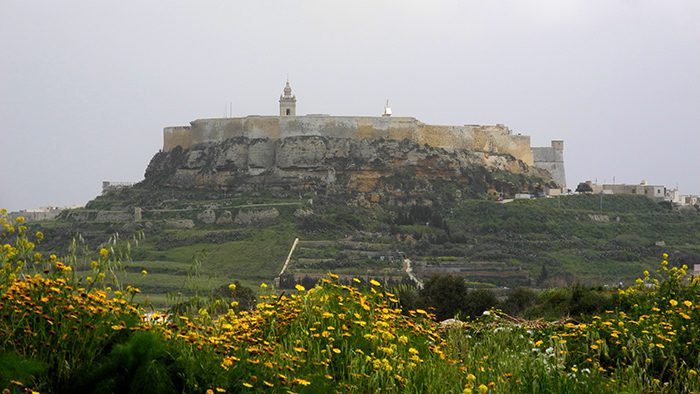
Nowadays, Victoria is an animated, cultural hub. A popular culture and arts event, Festival Mediterranea, is held here every fall. The festival centers on opera, Gozitan history, art and food. It is a great opportunity to get acquainted with the island’s heritage through visual and performing arts. Book your Full-Day Gozo Island Excursion from Malta here.
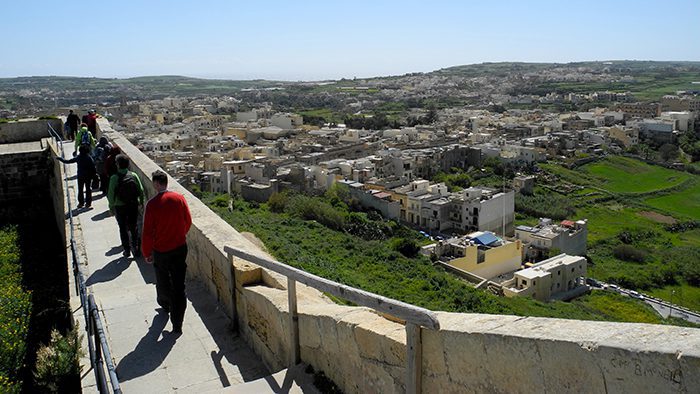
The Citadel, or the Citadella, is the fortified center of Victoria known as the jewel of Gozo. Like the fortified city of Mdina on Malta, the Citadel of Victoria was created out of the need for protection against invaders. The Knights commissioned the construction of the Citadel in 1599 in order to protect the Maltese. Before the Citadel, life for the Gozitans was harsh.
Also check out the 20 Places You Must See in Malta
Their small island was susceptible to frequent pirate raids and attacks. In 1551, Ottoman forces overtook vulnerable Gozo and captured around 600 people, leaving behind only the old and sick. The captive Gozitans were taken to Tripoli where they were sold into slavery. It was clear that something had to be done to protect Gozo’s people.

The Citadel continues to be one of the most frequented tourist attractions of the island. Visitors can walk along the bastions and take in stunning 360° views of the surrounding villages, farms and countryside. Within the fortification are plenty of sites to explore, including museums, restaurants outdoor farmers markets, the Battery and gun powder depot and it-Tokk, also known as Independence Square. The museums are open Monday to Sunday 9:00 am to 5:00 pm. Joint admission to multiple Citadel sites is €8 per adult and includes entrance to the Folklore Museum, Gozo Archaeology Museum, the Old Prison and the Natural Science Museum.
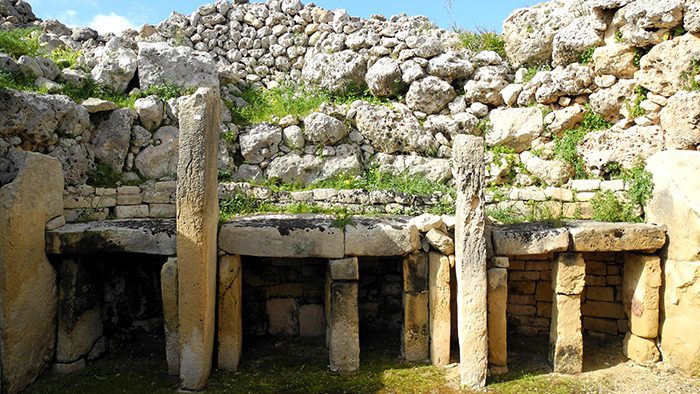
The Ggantija Temples are located in the small village of Xaghra, about 2 miles (3.2 km) northeast of Victoria. The temples comprise one of the most significant archaeological sites in Malta and also in the Mediterranean. They also predate Stonehenge and the Great Pyramids of Giza, and both have been deemed a UNESCO World Heritage Site. The temple ruins are part of a megalithic complex dating back to the Ggantija Phase (3600-3200 BC).
Check out our article: The Megalithic Temples of Malta and Gozo
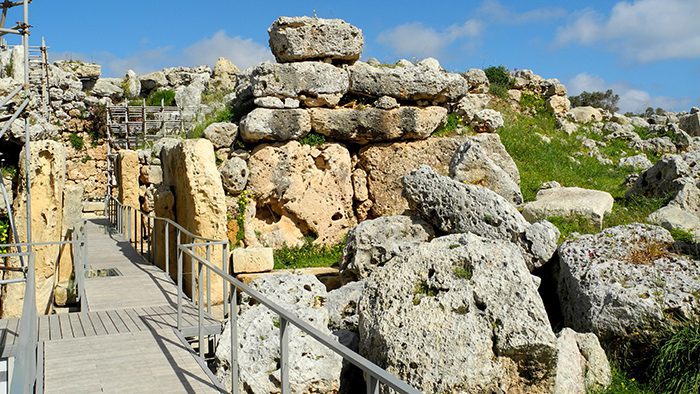
The society responsible for the construction of both temples is often referred to as the ‘temple builders.’ Little is known about these people, other than they most likely came from modern-day Sicily and lived peacefully as hunter-gatherers. Another puzzling fact is that their society somehow disappeared. That is, historians cannot figure out how they vanished from the Maltese islands entirely.
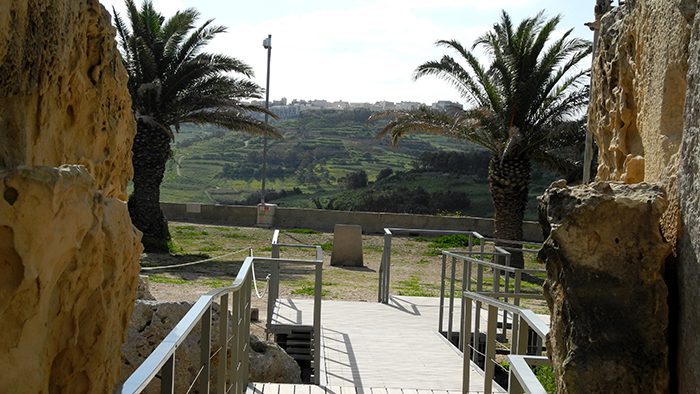
The name Ggantija stems from the Maltese word for giant. Ancient legends about a race of giants that lived in Gozo were a way of explaining the presence of the temples. Together, both temples cover a total are of 10,000 square feet (3,048 square meters). They share a boundary wall and each is constructed out of massive limestone slabs, with some weighing more than 50 tons!
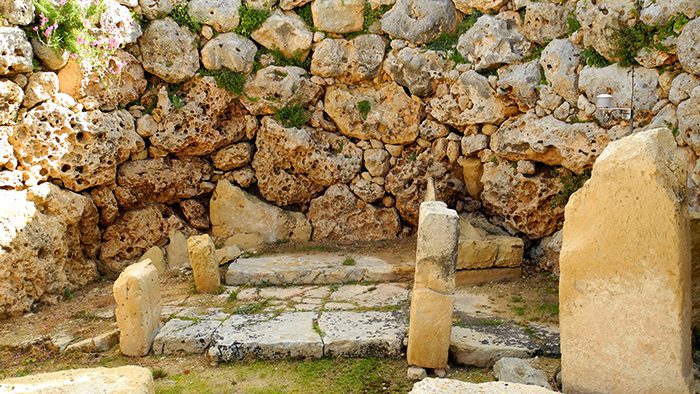
Excavations have produced clues about these colossal temples. Ritual rooms, curved walls, spiral-shape carvings, niches with altars, libation holes and animal bones provide us only with educated guesses about the original purpose of the temples. They were most likely used in the worship of a fertility goddess or Earth Mother, but beyond that there is not much to assume. It is likely that religious ceremonies would take place within the structure while a congregation of people stood outside in the large, raised forecourt in front of the temples. The altars in the larger of the two temples have become an iconic image for Gozo, and can be found on postcards throughout the island. Each altar is constructed out of vertical stone slabs. Also in the larger temple, is a stone hearth that suggests fire was an important component of temple rituals.
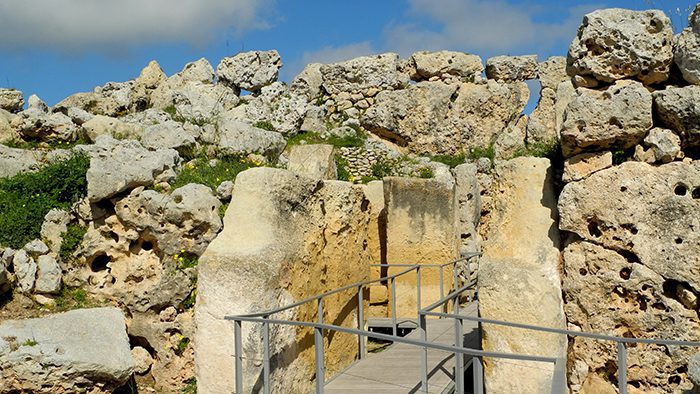
The reality about the Ggantija Temples is that nobody alive can know the complete truth about them. They remain a compelling testament to early human civilization and will continue to evoke a sense of mystery in all who visit them. The Ggantija Temples are open Monday to Sunday from 9:00 am to 5:00 pm.
Admission cost is €5 per adult, €3.50 for ages 12-17 and those over 60, and €2.50 for ages 6-11. Children 1-5 years enter free.
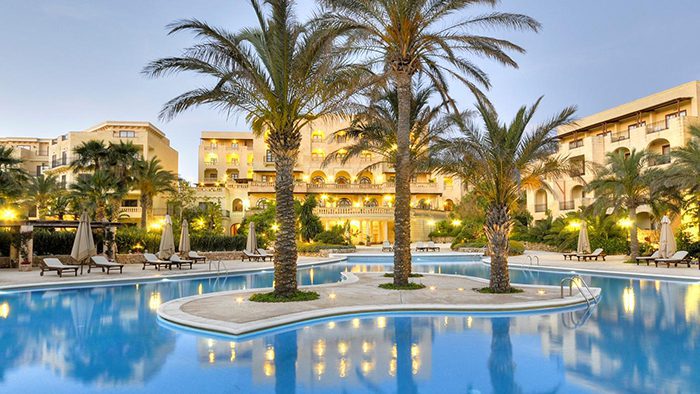
The Kempinski Hotel San Lawrenz is located in San Katald, about 2 miles (3.2 km) southeast of Victoria, on a sprawling property. This large, resort-style hotel has Mediterranean décor and all the creature comforts of home, plus some extra ones you may want to get acquainted with. The Kempinski Hotel’s Quintessence Spa is a renowned facility that is also open to non-guests who wish for total relaxation and healing body treatments. It was named Malta’s leading spa in 2009, 2010 and 2011. Perhaps it is the highly specialized masseuses, the long list of indulgent spa packages for men and women, or maybe it’s because of the serene ambiance Quintessence induces.

The Day Spa provides much-needed fine-tuning to achy muscles, cleansing and detoxifying of the face, pampering of the hands and feet, grooming of head and body hair and exotic baths. If those choices were not enough to entice you, the spa’s newly established Ayurveda Retreat is designed to restore balance back to your body with yoga, herbal cleanses, massages, dietary advice and nutrition-packed body wraps.
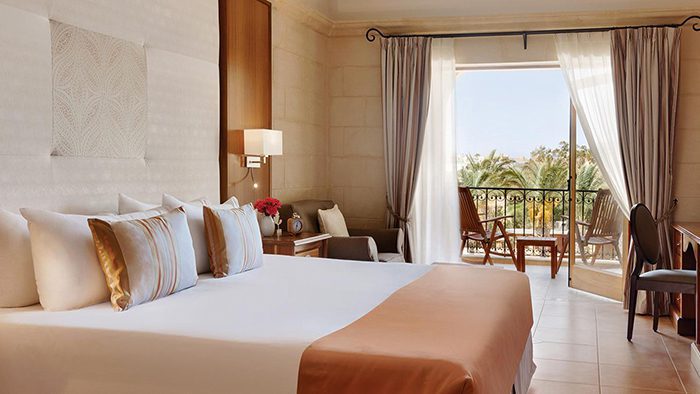
An Ayurveda consultant meets with each client one-on-one to discuss physical ailments and possible causes. Then, a treatment suggestion is given and is mutually decided upon. From there, clients are whisked away to a cozy, luxurious oasis to begin their restoration back to health. Three, five, and six-day spa retreats are also available. Each day involves a different set of decadent treatments to bring you back to life.
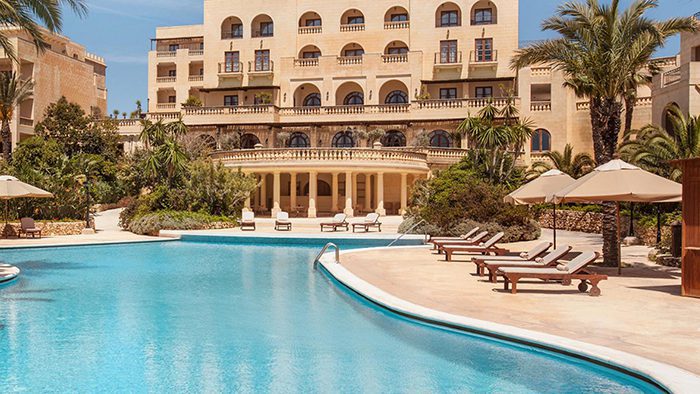
Spa treatment prices range from €7 to €750, depending on what you would like to have done. You can count on the staff to be friendly, professional, and always available to help you minimize your stress and maximize your mental and physical well-being. All treatments require advance booking.
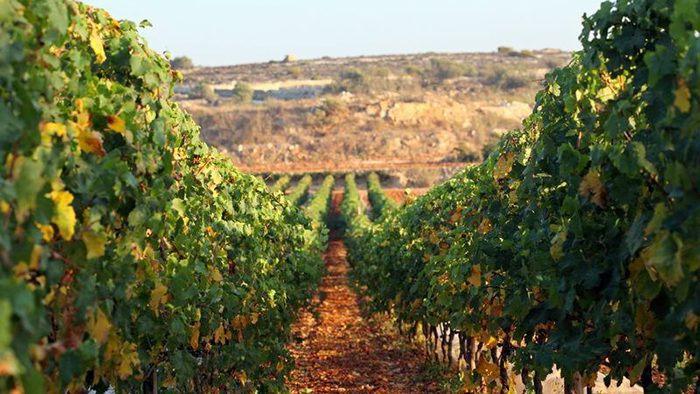
Pioneers in Maltese agricultural tourism (AKA agri-tourism), the Ta’ Mena Estate is a must-do for anyone wishing to experience Gozitan culture to the fullest. Ta’ Mena is a private farm complex offering guided tours of the vineyards, orange and olive groves and private group functions such as weddings and family picnics. Guests also get the chance to pick their own fruits and vegetables and participate in wine and food tastings.
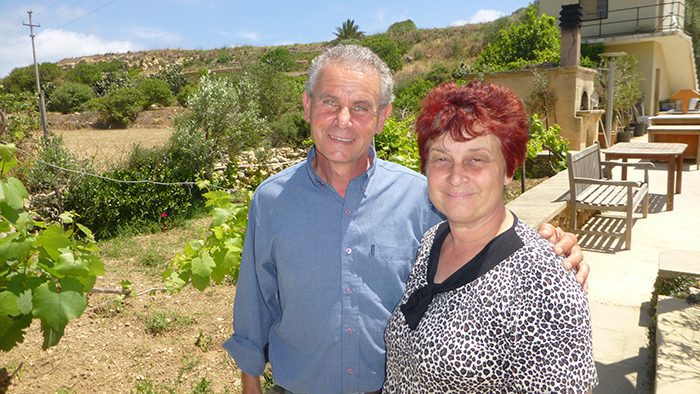
Ta’ Mena Estate is renowned throughout the Maltese islands for its wines and liqueurs, but it also produces a variety of foods such as fruit preserves, cheeses, oils, local honey, olives, herbs and sweets. Here, visitors have the unique opportunity to be part of a hands-on education about Gozitan farming. Ta’ Mena Estate also has tourist apartments available for rent, which are renovated farmhouses complete with all modern amenities, swimming pool and gorgeous panoramic views of Marsalforn Valley.

They are ideal for families seeking the quiet, countryside experience Gozo can offer. Since 1971, the Ta’ Mena Estate has been a well-respected figure in the Gozitan food and wine industry, thanks to the late owner, Carmena, who began selling her fresh produce to the local communities. Now, Carmena’s family carries on her legacy by teaching others to respect the land and fall in love with the local food. The Ta’ Mena Estate is in the town of Xaghra, which is located about 2.5 miles (3.9 km) northeast of Victoria. Prior booking is required for tours, tasting, private events and accommodations. The shop is open daily.
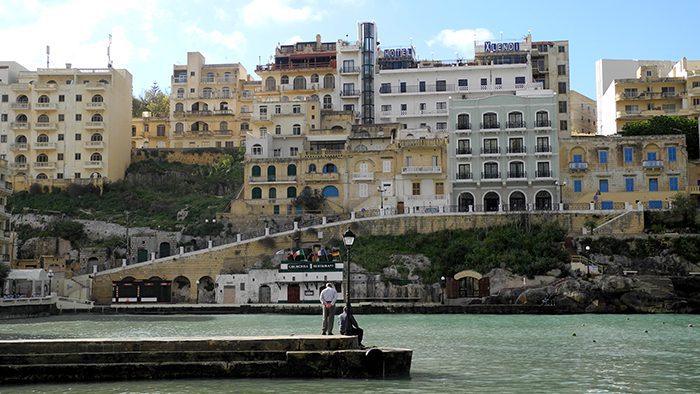
Located about 2 miles (3.2 km) southwest of Victoria is the petite, coastal village of Xlendi. It sits on a sandy inlet of Xlendi Bay and features a quaint, but charming promenade lined with restaurants, hotels and casual cafés. Xlendi has long been a fishing village. Boats can easily head out for fresh catch in the open ocean, and then return safely back to the inlet that provides them natural protection against rough weather.
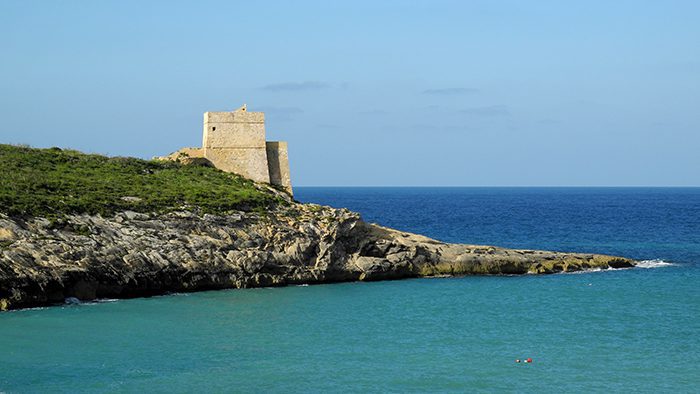
In recent years the Xlendi area has had a boom of luxury condos and summer homes. It is no wonder why someone would want to come here to unwind; the colossal cliffs and turquoise water views are intoxicating, not to mention the convenience of having an abundance of fresh seafood in the area.

Xlendi Bay is a great spot for diving, snorkeling, swimming or a fresh-caught waterside feast. Remnants of the past can still be seen, such as the Xlendi Tower. It was built in 1650 by order of Grandmaster Lascaris, and purposed to protect Gozo against pirates and Ottoman attacks. Just beyond the Tower is the scenic Il-Kantra Valley, a lush stretch of land dotted with boulders and flowering plants.
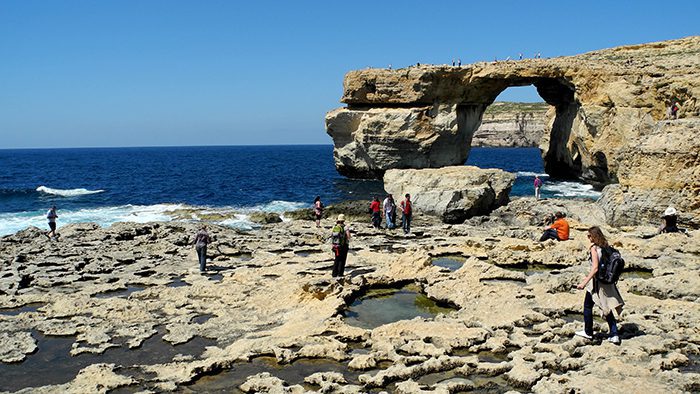
Located along the rocky western side of Gozo, Dwejra Bay is a protected nature reserve heralded as one of the island’s most scenic locations. It was also home to one of the Mediterranean’s most beautiful natural wonders, the Azure Window (before it collapsed in 2017). Dwejra Bay proves to be the spot of choice for exciting scuba dives, lazy beach days, rock climbing, boat cruises and snorkeling. The limestone cliffs are riddled with prehistoric fossils and provide a scenic backdrop to the perfect sunny afternoon.
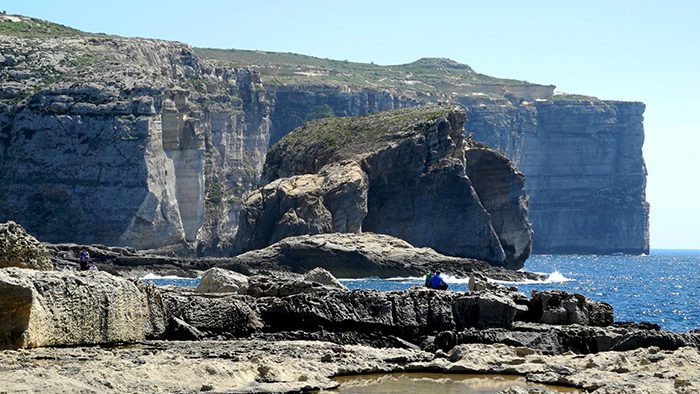
The iconic image of the Azure Window has been used in various films such as Clash of the Titans (1981), The Count of Monte Cristo (2002) and more recently in the HBO Series Game of Thrones (2011). It shall remain one of favorite memories of Malta.
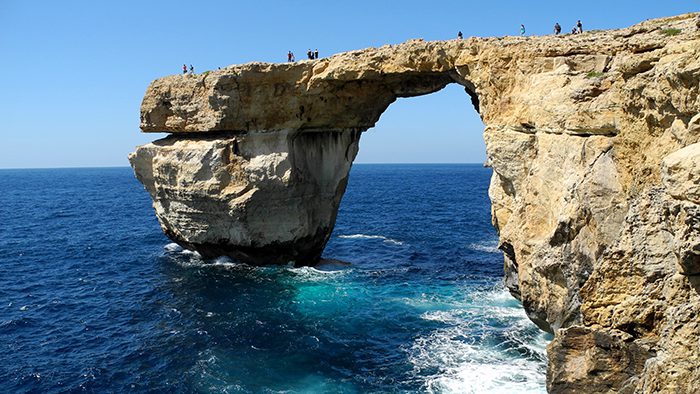
Other nearby sites of interest are Fungus Rock and the Inland Sea. Fungus Rock can be seen from the base of the Azure Window. Historically, it was protected because the brownish-colored fungus that grows on it was thought by the Knights of St. John to have powerful medicinal properties. In actuality, scientists have yet to establish this assumption. The Inland Sea, or Il-Qawra, is the lowest area of the island. It is shallow body of water that connects to the ocean via a narrow tunnel. Boat tours for the Inland Sea can be arranged through your hotel.
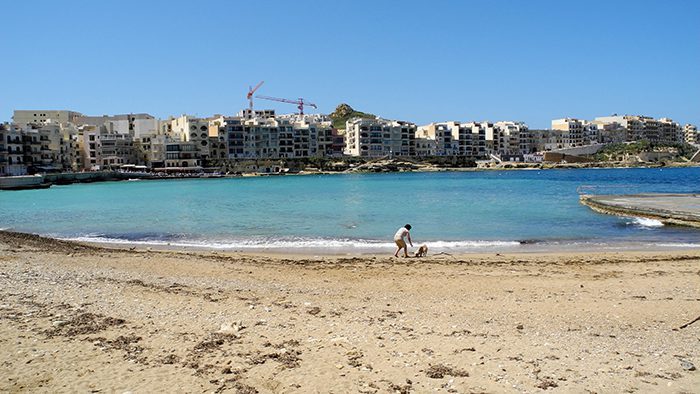
Marsalforn stands out as a lively tourist attraction on the northern coast of Gozo. This long-time fishing town is big on hospitality and sports an animated boardwalk. Before Mgarr Harbor became Gozo’s main seaport, Marsalforn was an important port during the 16th century when merchants were bringing goods from nearby Sicily. The Romans before them also used Marsalforn as a center of commerce and sea salt harvesting.
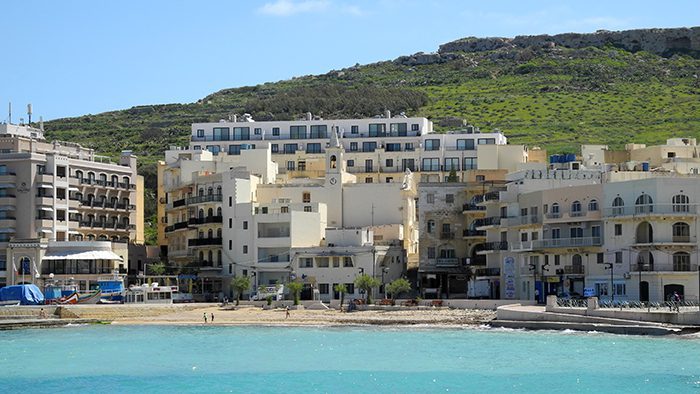
Although Marsalforn does not have a sandy beach, it is an especially popular place during weekends, where locals and tourists alike can enjoy the sea breeze and dine on Gozitan goodies by the water’s edge. Walking along the boardwalk will reveal how intricately connected Gozitan culture is to the sea and her bounty. The Maltese people relish their blue backyard, which is why luxury condos peer out from the cliffs overhead.
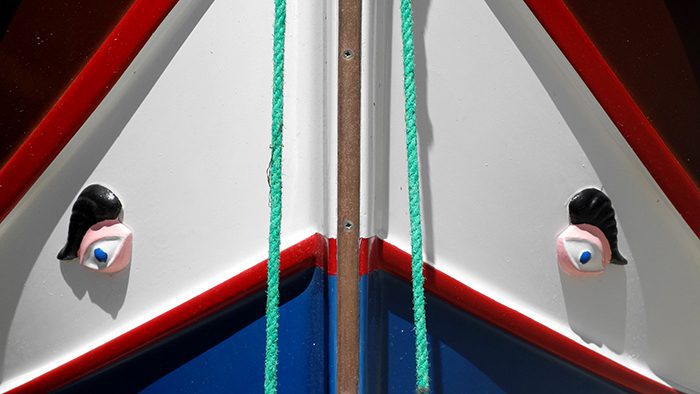
Colorful luzzu (pronounced loot-su) boats with their distinctive pair of eyes at their bows float alongside the boardwalk. These boats are unmistakable and painted in pulsating reds, blues, yellows and greens. This custom of painting eyes began with the Phoenicians and Greeks and is believed to ward off evil. Fishermen take pride in their luzzu boats and regularly use them to bring back the daily catch. Attractions in the area include the salt pans, Calypso Cave and Ramla Beach.
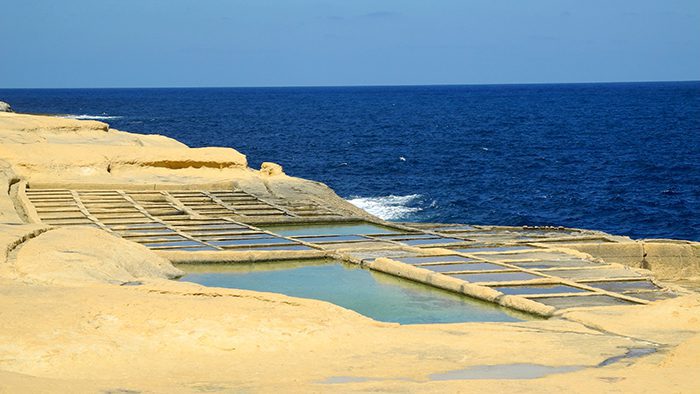
The ancient Romans began the salt pans of Marsalforn over 2,000 years ago, and the process is still being done to this day. Sea salt is coarser than refined salt and is a staple in Mediterranean gastronomic traditions. Ironically, it is not considered to be as salty-tasting as its refined or iodized counterparts.
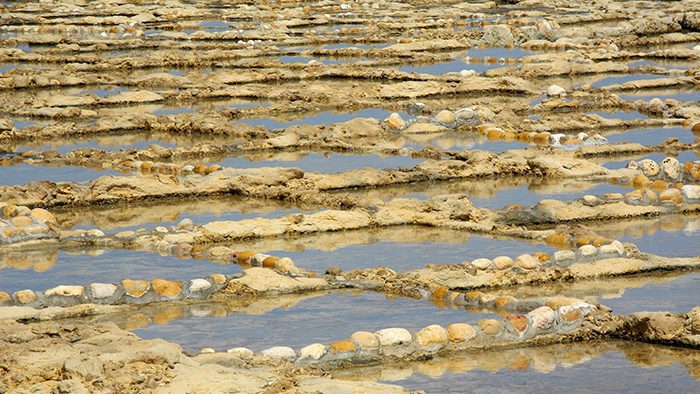
If there is one thing the Maltese do have, it’s an endless supply of sea salt, but it does not end up in your salt shaker by accident. Salt panning involves carving shallow niches into rock by the sea and pumping them regularly with seawater. The stagnant seawater is then left to evaporate in the sun. What gets left behind is the final product- rock salt. It is a natural process that yields a versatile cooking ingredient. The Marsalforn salt pans are a fascinating display of ancient ingenuity still being used today.
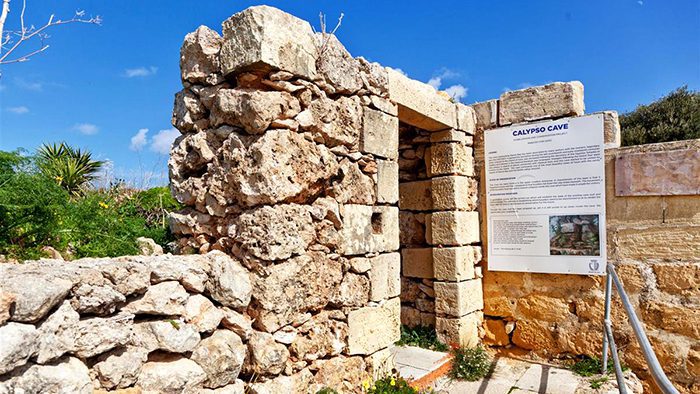
According to Homer’s epic poem, The Odyssey, Odysseus was held captive by the nymph Calypso for seven years in a cave on the island of Ogygia. The story tells that she was so madly in love with Odysseus that the gods had to intervene and order her to release him so that he may return to his wife Penelope in Ithaca.
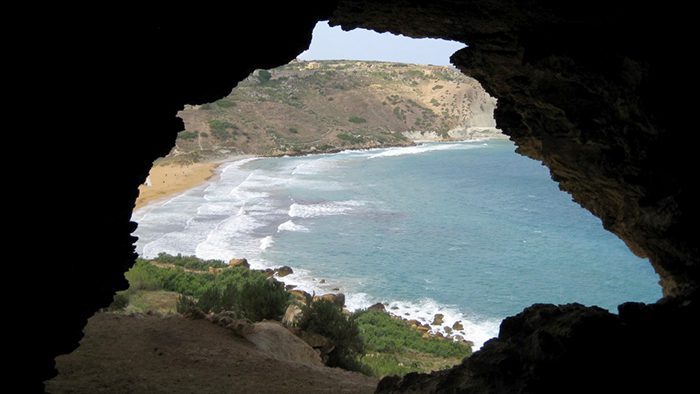
The story may be myth, but many believe that the island of Ogygia is actually Gozo, and that the cave in the story is an actual cave located in Xaghra, about 2.5 miles (3.9 km) northeast of Victoria. The cave itself is not open to visitors anymore, but still draws crowds due to its association with the legend of Calypso. From the entrance of the cave, visitors get a bird’s eye view of Ramla Beach.
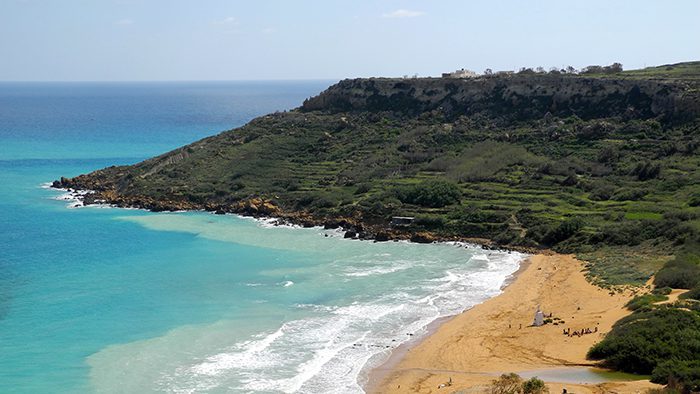
Ir-Ramla, or Ramla Beach, is one of Malta’s only sandy beaches. It is located in Xaghra at the base of a verdant, fertile valley and is known for its distinctive reddish-colored sand. Ramla is an excellent place for swimming, relaxing by the water with a good book or for an afternoon picnic. There is rarely a time when Ramla’s shore is not filled with people playing Frisbee, flying kites or spending time with family. Ramla Beach also has bathroom facilities, a snack bar and ice cream shop close by.
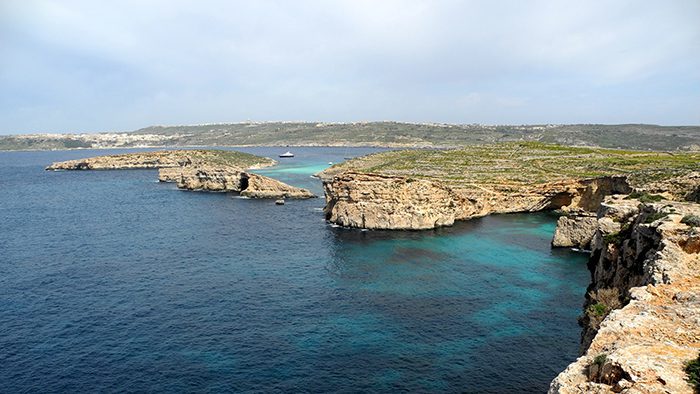
Comino is the smallest inhabited island in the Maltese archipelago. Just 1.35 square miles (3.5 square km) in area, Comino makes a perfect day trip destination for sun and surf lovers. Comino’s geography is comprised of rocky cliffs, caves and crystal blue water. The island’s most prominent building is St. Mary’s Tower, a 15th century, defensive structure used by the Knight of St. John to protect Malta from pirate raids. The tower has been featured in films such as The Count of Monte Cristo (2002), in which it was portrayed as the desolate prison Château d’If.

This nearly uninhabited island is perfect for those seeking waterside relaxation, but also appeals to photographers, hikers, nature-lovers and scuba divers because of its dramatic scenery both above and beneath the water.
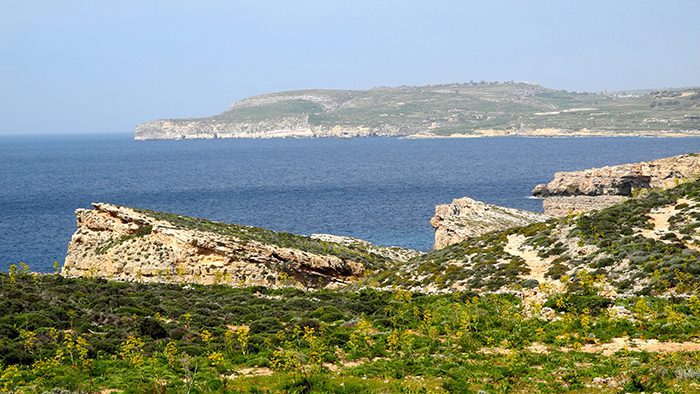
But the real reason most people venture to Comino is the Blue Lagoon. Each year luxury yachts, small dinghies, and fancy catamarans transport hundreds of people here to swim, snorkel, and soak up the sun. Its name is derived from the luminous white sand under the surface of the water, which gives the Blue Lagoon its turquoise glow. Besides a simple snack bar and the restaurants in the Comino Hotel restaurants, there are no other eateries on the islet, making it a perfect opportunity for an al fresco picnic on the sand. It’s one of the best places to see in Gozo, Malta. Contact the Comino Hotel for reservations.
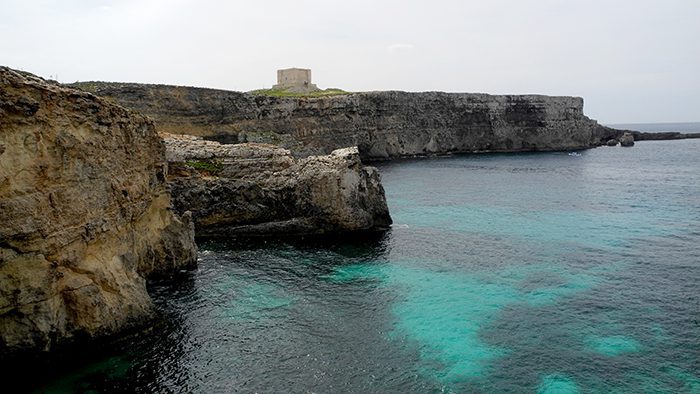
There are dozens of ferry transfers to Comino and choosing the right one is very important. Several local companies shuttle tourists back and forth. Each has its own stand in and around Mgarr Harbor, but prices among them can be inconsistent, so be sure to book with one you feel comfortable with. Finally, arrange a pick-up time prior to paying for the round trip. Comino is a tiny jewel that can easily be explored in less than a day’s time. Bring a bathing suit and sunblock and get ready to make a splash.
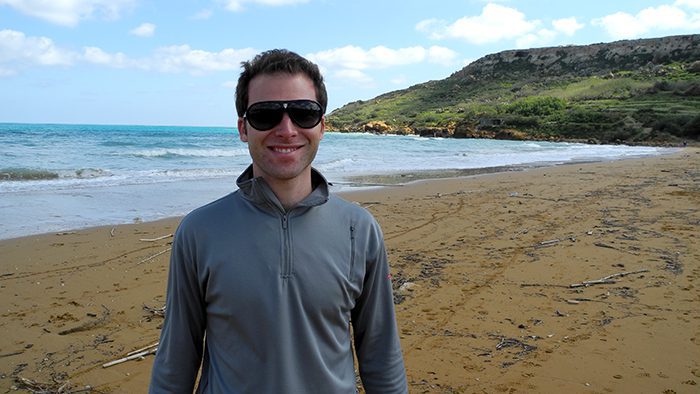
I cannot emphasize enough how much Gozo changed my idea about the Mediterranean region. It is a small, mostly agricultural island with a great deal of rustic charm and unpretentious hospitality. If you are looking for a fast-paced party paradise, then Gozo is not for you. Instead, here you will discover an island that moves at a more leisurely tempo and that will allow you to focus on the simple pleasures; the taste of your food, the feel of the ocean breeze, and your first encounter with the remarkable prehistorical Ggantija ruins.
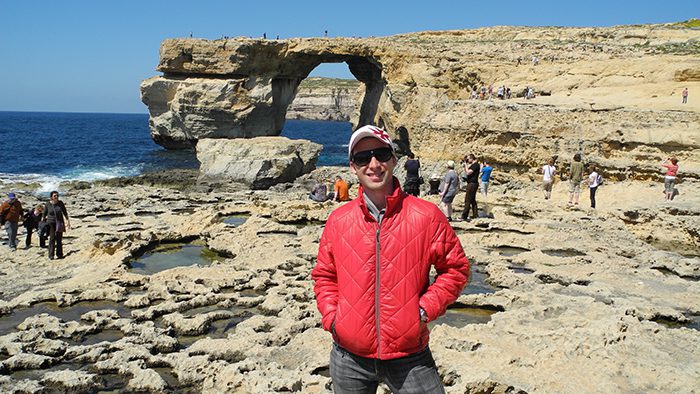
Because of Gozo’s rural society, Maltese agri-tourism is gaining popularity. Many people opt out of luxury hotels like Ta’ Cenc and instead choose to spend their time in renovated farmhouse accommodations like those at the Ta’ Mena Estate. I found that the most enchanting places on the island are villages like Zebbug and Zetjun, which are closely tied to the olive industry. Other towns like Ghasri and Nedur host religious festivals and celebrate their own Carnival in the days leading up to Ash Wednesday. There is one event, however, that stands out above the rest and attracts hundreds of tourists and locals alike. Festival Mediterranea is an annual event held in mid-fall that centers on local arts, music and culture. Music concerts, operas, conferences, lectures and food samplings dominate the festival, which is held in Victoria.
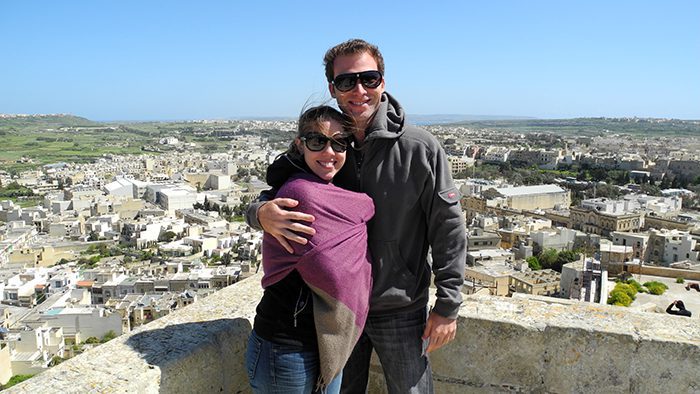
Gozitans have noticeably different lifestyles, cultural traditions and accents than their sister island inhabitants. Another distinction is the cuisine. Be sure to pick up some local honey and try Gbejniet (peppered goat cheese) that is available at nearly every restaurant on the island. The local olive oil is also superb and comparable to any high quality Spanish or Greek brand. Exploring Gozo may not take you more than a few days, but it will be an experience you (and your stomach) shall remember always.
Time Zone: Central European Time (CET). 6 hours ahead of EST in winter and 7 hours in summer.
Where to eat: See our list of awesome restaurants in Gozo
Shopping: Shopping is mainly concentrated in Victoria, but there are small shops in most villages. Typical opening hours are Monday to Saturday 9:00 am to 1:00 pm and again from 4:00 pm to 7:00 pm. Some stores are open later during the summer months. Authentic souvenirs: silver filigree, hand-blown glassware, lace and Gozitan honey.
Nightlife: Although not as lively as Malta’s nightlife scene, Gozo does feature a handful of bars and clubs, mainly in the Victoria area. La Grotta is a popular open-air nightclub located in the Xlendi Valley. It is regarded as one of Europe’s most beautiful outdoor clubs and is open only in summer.
If you have any recommendations about places to see in Gozo, Malta, leave us a comment below!
Counter
101 Countries • 1432 Cities
Greg says:
Interesting post and beautiful photos 🙂 While on Gozo I rented a bicycle and so I visited the island. It was a cool adventure.